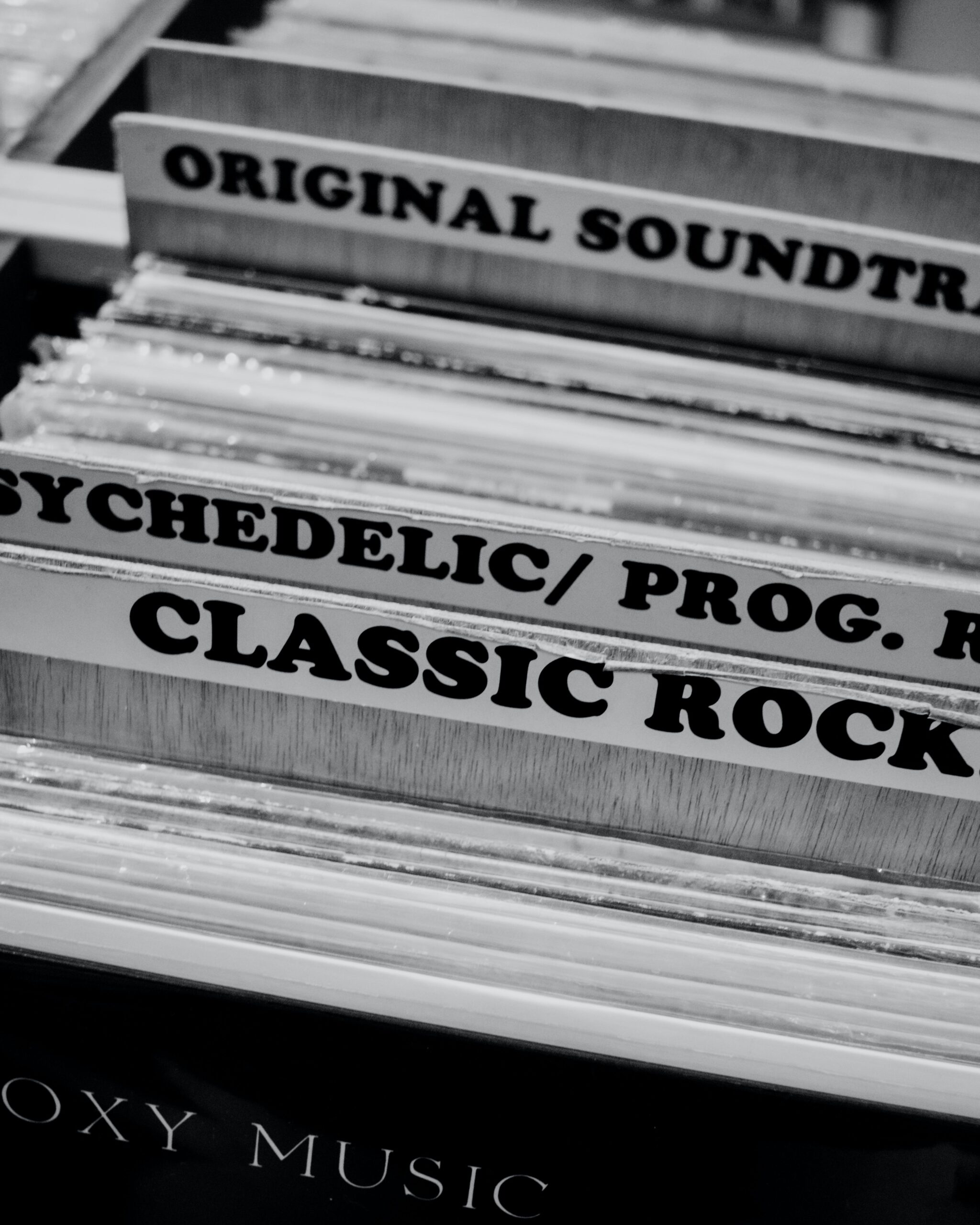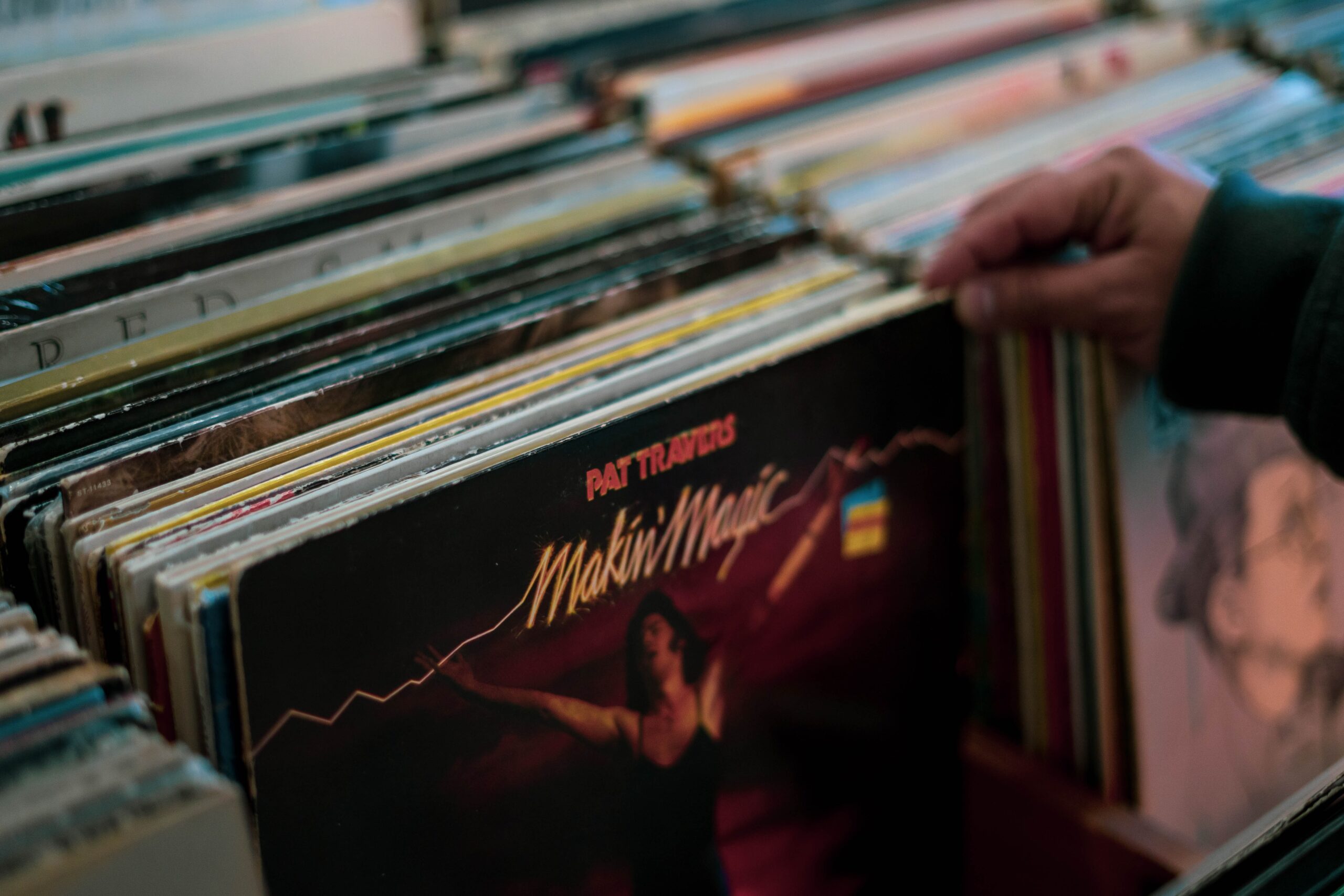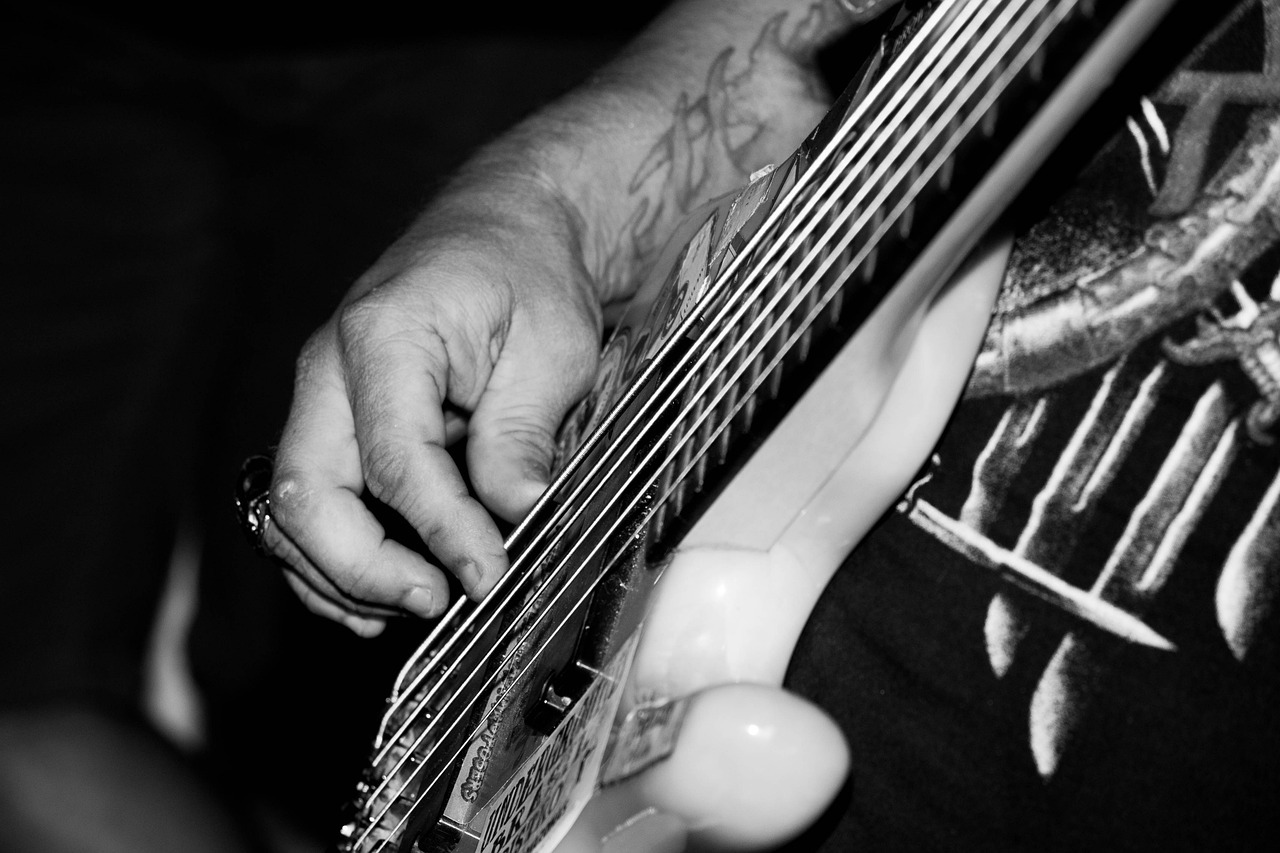Classic rock has been branded “dead” one too many times. Although many die-hard fans will beg to differ, the truth is simply that classic rock is now a mere shadow of what it used to be. While there are new rock bands that may have yet to attain the classic rock status in the next 20-30 years, it is highly unlikely that they will be able to reproduce the immense and unforgettable influence and legacy that The Beatles, Led Zeppelin, The Rolling Stones and many others have left behind. For the all-time greats — massive air play and online streams continue to be the order of the day. But in the coming years, the classic rock of the last generation will soon become the oldies of today, waning in influence, recognition and interest. Some 30 years ago, it was The Rolling stones, Led Zeppelin, The Who and a fine array of other bands and artists. The big riffs, big voices, huge arena shows, long hairs, intricate compositions, political rebellions and big band concert t-shirts that sell for hundreds of dollars on eBay which all culminate into the identity of classic rock, are slowly washing away; and the 60-year dominance of rock and roll including all of those in the classic rock category can best be translated to a battle won up to the 80s but a war in the 2000s onwards.
Even though we do not know the path that the journey of rock will take, we certainly hope that the music will continue to evolve with the new generation and draw from its rich history of classic rock to deliver a fine blend to keep the legacy alive.
Introduction to Classic Rock
Classic rock is musical transcendence – living well beyond its time. It has reached through decades of cultural and political change that has largely reflected the times and the turmoil of that era. Because of its strong and wide-ranging influence, it can be difficult to define. Most agree that classic rock has a guitar-driven sound that emerged during the 1960s and peaked during the early to mid-1980s. Many also agree that classic rock was borne out of the album-oriented rock (AOR) of the 1940s and 1950s. Unlike pop, rap, and R-n-B, classic rock is not explicitly a genre, but rather a form of rock that was able to hit legendary status and outreach. The term is mostly used to immortalize music from top selling artists that had a resounding influence on culture, politics, and lifestyle. Bands such as The Beatles, The Rolling Stones, Led Zeppelin, and The Doors are just some of the groups that moved the heart and soul of an entire generation that dared to question and defy the status quo.
While certain bands may obviously fall into this category, it is also helpful to clearly define what classic rock is not. It is not glam rock, heavy metal, or hair metal. It is also important to understand that it is only a subset of what is often called oldies music.
It is not uncommon for people to assume that all oldies music is classic rock. However, oldies music typically spans from the 40s to the 60s and is characterized as commercially successful songs that may or may not have that distinctive guitar-driven sound. While oldies radio stations might include classic rock in their line up, classic rock stations mostly remain exclusive to the classic rock sound and time-period.
Defining Classic Rock – What makes a song or album classic rock?
As noted, this is a difficult question to answer. To a large extent, classic rock owes its name and popularity to album-oriented radio (AOR) stations of the 1980’s that played a diversity of rock music from the ‘60s to the early ‘80s. Sometimes the artist, airtime, music style, and record sales can determine whether or not a song falls into this category. However, upon considering the long list of classic rock bands, it is evident that there is diversity within this musical universe with bands such as The Beatles and Led Zeppelin pushing their own unique sound under the classic rock umbrella. Although many of these bands are still relevant and popular today, we generally use the following criteria to determine whether or not a song is classic rock.
- It was recorded during the ‘60s to the early ‘80s time period
- It was and continues to be a favorite of millions of fans around the world
- A big-name band or artists recorded it. However, if the album only successfully pushed out one or two hits, the artist or album is most likely not considered a “classic”.
- It still racks up ongoing airplay and driving sales.
Classic rock music stations across the country continue to play that rock sound with the screaming guitars and iconic sounds and bands like the Beatles and Rolling Stones continue tell songs and fill playlists.
History
The AOR radio stations that were aiming to cater to an older audience by playing well-known songs from the past with current hits gave rise to the classic rock genre. Cleveland’s AOR radio station M105 started referring to itself as “Cleveland’s Classic Rock” in 1980 and started playing a variety of rock music from the middle of the 1960s to the present. In 1981, WMET referred to itself as “Chicago’s Classic Rock.” The “Timeless Rock” format, created in 1982 by radio consultant Lee Abrams, mixed modern AOR with popular rock songs from the 1960s and 1970s.
Houston’s KRBE was a pioneering classic rock radio station. Paul Christy, the director of the show, created a format in 1983 that played solely early album rock from the 1960s and early 1970s, with no contemporary music or songs from the pop or dance side of the Top 40. KRQX in Dallas-Fort Worth was another AM station playing classic rock starting in 1983. KRQX shared ownership with 97.9 KZEW, an album rock station. The FM station’s appeal to younger rock fans and the AM station’s appeal to somewhat older listeners were seen as advantageous by management. To entice advertisers, the combined ratings of the two stations may be used. The phrase “classic rock” quickly spread among the public as a way of describing the genre and early album rock songs.
The format’s broad adoption in the middle of the 1980s after the successes of Edinborough Rand (Gary Guthrie) at WZLX in Boston and Jacobs Media (Fred Jacobs) at WCXR in Washington, D.C. Over the course of the following several years, Guthrie and Jacobs collectively converted more than 40 big market radio stations to their unique style of classic rock.
Kim Freeman of Billboard magazine asserts that “although classic rock’s roots may be found further back, 1986 is typically considered as the year of its inception.” Oldies made up 60–80% of the music played on album rock stations by 1986 because of the format’s success. Even though it was initially a small subgenre of AOR, album rock had lost market share to classic rock by the end of 2001.
The adult male 25–34 age group was the primary target audience for the classic rock format in the middle of the 1980s, and it remained the group’s largest until the middle of the 1990s. The demographics of the format shifted toward older age groups as its audience became older. The greatest demographic for the format was the 35–44 age group in 2006, and the 45–54 age group in 2014.
The 1950s: Rock and Roll Comes to Life
The rhythm and blues genre strongly influenced the emergence of rock-n-roll during the 1950s. Artists ranging from greats such as Nat King Cole and Frank Sinatra were also instrumental in helping new artists develop their sound.
“The Beatles and the Stones were basically inspired by American rhythm and blues.” – Mick Taylor
“My brother fell in love with rhythm and blues early and gave me a strong dose of it.” – James Taylor
“Everybody started calling my music rock and roll, but it wasn’t anything but the same rhythm and blues I’d been playing down New Orleans.” – Fats Domino
“It used to be called boogie-woogie, it used to be called blues, used to be called rhythm and blues… It’s called rock now.” – Chuck Berry
“When you sit down and think about what rock ‘n’ roll music really is, then you have to change that question. Played-up tempo, you call it rock ‘n’ roll; at a regular tempo, you call it rhythm and blues.” – Little Richard
In 1953, Bill Haley and His Comets released one of the first true rock and roll songs, with their song, “Crazy Man Crazy”. It debuted at No. 12 and was the beginning of the cross-over from R&B to Rock ‘n Roll. By 1955, Bill Haley’s “Rock Around The Clock” became the most-played hit in the country, topping the Billboards music charts. Many people would sneer that rock and roll would fade. However, rock and roll proved to have more staying power that saw the emergence of other bands like The Coasters, The Crows, and of course one of the greatest musical successes of all time, Elvis Presley, Buddy Holly, Johnny Cash, and Wanda Jackson were other major acts that moved rock and roll to center stage.
The 1960s: Rock Music Came of Age
The Ed Sullivan Show was one of the programs that changed the landscape of television. Originally titled The Toast of the Town, The Ed Sullivan Show initially presented vaudeville to the small screen. But later on, it wasted no time in taking advantage of rock and roll’s nascent popularity (most likely in a bid to attract the younger viewers).
Elvis Presley was, no doubt, the most famous rock and roll star during his time so it is only natural that every television bigwig wanted to get his hands on him. The show’s host, Ed Sullivan, had initial reservations about guesting Presley because he thought of “The King” as “too vulgar.” But after he saw rival Steve Allen beating him in the ratings for guesting Presley, Sullivan changed his mind and made a deal with Presley’s manager, Colonel Parker.
Presley’s eventual infamous third and final appearance on The Ed Sullivan Show had him shown only from the waist up as not to show his suggestive hip gyrations that had earned him the nickname “Elvis the Pelvis.”
Sullivan first got to witness Beatlemania when he encountered a frenzied crowd rushing to greet a plane landing on London’s Heathrow Airport in 1963. When he asked what was all about, he was told it was for the Beatles. ” Not the one to be left behind when it comes to discovering new sensations, he asked again, “Who the hell are the Beatles?” In less than a year he would provide the answer to America who the Beatles really were. And the rest is history – The Beatles made their first appearance on The Ed Sullivan Show on February 9, 1964, and approximately 73 million tuned in to watch the mop tops charming the fans with their new sound and charisma.
After bringing Elvis Presley into every living room in America, Sullivan became the biggest star-maker who opened the door for more rock and roll artists including Buddy Holly, The Beach Boys, The Doors, and other British Invasion acts like the Rolling Stones, The Animals, Herman’s Hermits and others aside from the Beatles. Television greatly afforded new rock acts to show their talent and celebrity potential.
Rock concerts’ popularity also grew. Festivals, such as the Monterey Pop Festival, sold out in 1967 with over 55,000 fans attending during each of the three days. The top bands of this era were The Beatles, The Jimi Hendrix Experience, and The Doors. In 1969 the Woodstock concert topped all concerts with over 400,000 people descending on a dairy farm in the Catskill mountains of New York.
During the late 60s, psychedelic rock started to emerge from the UK and drew inspiration from blues rock and other genres. This style of rock was inspired by the growing use of perception and mood-altering drugs. The goal was to embody the emerging counter culture in rock and roll music. Some of the more well-known bands and artists include Pink Floyd, Frank Zappa, The Beatles (notably their eponymous 1968 album, aka “The White Album”), Eric Clapton, Deep Purple, Steve Miller Band and many more.
The 1970s: Rock vs. Disco
Despite disco’s rise to prominence during the 1970s, it did not diminish classic rock’s popularity. By the ‘70s, bands like Led Zeppelin, The Who, and Grand Funk became full-blown celebrities and were touring the world to sold-out venues and raucous crowds.
As other bands gained popularity, groups such as The Beatles broke up and each member moved on to pursue solo careers. Then in 1977, rock music suffered one of its biggest losses with the death of Elvis Presley.
Elton John was the best-selling artist of the ‘70s. Hits like “Rocket Man” and “Crocodile Rock” had enabled him to score seven consecutive albums that debuted on the top of the Billboard charts. The 70s was without a doubt the biggest era for classic rock and cemented the genre in music history. (You may note that you will find some classic rock aficionados who would consider Elton John as more of progressive rock or pop rock artist, or sometimes even a glam rock artist)
By this decade where classic rock became wildly popular, fashion styles also changed with tight jeans, high heels and platforms with the ladies. Bell-bottom pants also ruled supreme in that generation and these translated into the preferred styles of rock bands and celebrities. The late 1970s also marked the emergence of electronic music and synth-pop.
One of the greatest bands of the ‘70s was Led Zeppelin, who formed in London around 1968. The band featured a sound that was built around the guitar with lots of blues and, later in their career, heavy metal. The quartet was credited with some of the earliest commercial successes of classic rock bands with their first album, Led Zeppelin. One of their most iconic songs, “Stairway to Heaven,” is arguably one of the top ten greatest classic rock songs of all time.
Pink Floyd was another English rock band who made critical acclaim for their unique mix of psychedelic and progressive rock. The quintet is one of the most successful rock bands in modern music history, having been inducted to the Rock and Roll Hall of Fame in 1996. Their 1973 album The Dark Side of the Moon is regarded as a rock masterpiece that has remained evergreen and one of the most beloved rock albums in history. The album sold more than 50 million copies globally, even more so long after the band left active recording and touring. They are regarded as one of the earliest bands to introduce esoteric and dynamic light effects and pyrotechnics during their live shows. Most of their songs were also considered quite radio-friendly.
The Eagles were established in 1971 and were led by Glenn Frey on lead vocals and guitar, Don Henley on drums and vocals and two other band members. The Eagles were so talented that their eponymous 1972 debut album had three songs that became big Billboard Top 40 hits. Their Greatest Hits album is a case study for most classic rock students in terms of the harmony and the sound range that the band was able to produce. They may not be the greatest ever classic rock band but they are definitely in the conversation no matter how you want to look at classic rock in the 70s.
Aerosmith is regarded as America’s greatest ever rock and roll band and is credited with setting the standard for hard rock and heavy metal from the 70s until many decades later. The Boston, Massachusetts-based quintet developed a unique riff boogie that was hard and loose, easy to listen to and extremely catchy. By hitting notes with both pianos, strings and guitars, they were able to execute a wide range of songs from soulful ballads to rock and roll anthems that came to live on.
The 70s also had a massive impact from The Rolling Stones, with its lead vocalist Mick Jagger experimenting with a wider variety of sound types and genres. The Stones were responsible for some of the best-ever rock songs on any all-time list. Specifically, they are credited with the blues-based rock sound that eventually set the tone for hard rock as we know it.
The 1980s: John Lennon, Classic Rock Radio stations and MTV
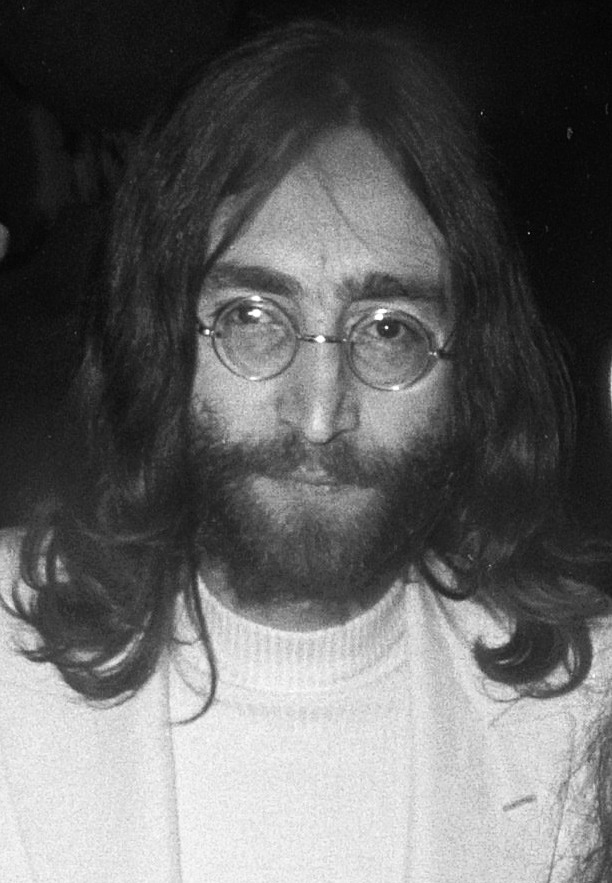 The 1980s started on a sad note with the tragic assassination of John Lennon by a deranged fan, Mark Chapman, right after he launched a new solo album Double Fantasy. The biggest influence on music in the 80s was the introduction of MTV which became part of the telecast of over 300 cable TV networks in America, expanding up to 2,000 by 1983. VH1 was introduced in 1984 and was more closely aligned to the classic rock-loving audience.Classic rock music became very expressive and music videos became the “in” thing. More bands evolved and were able to break through with their own music styles by shooting music videos which gained critical acclaim. Also, new genres like hip-hop and rap became more popular with acts like Run DMC, LL Cool J and Queen Latifah. Heavy metal was also became prevalent with bands like Motley Crue and Ozzy Osbourne coming at the forefront of its proliferation.By now, even some classic rock legends like The Rolling Stones became even bigger than ever and went on to amass over $50 million from tours in a single year (particularly their hugely successful American Tour in 1981). Technological developments also come to light, with vinyl records giving way to compact discs (CDs).By the mid-1980s, “classic rock” had become widespread as a radio format, having been tailored to a demographic that covered adult males, particularly those in the age ranges of 25 to 34. As this format’s listening audience aged, however, the demographic shifted to cater older age groups.The 80s also marked an important period for AC/DC, one of the classic rock groups who released their first song with Brian Johnson after the death of their former lead singer Bon Scott. This song, entitled “You Shook Me All Night Long” marked the beginning of future successes for the grief-stricken band.
The 1980s started on a sad note with the tragic assassination of John Lennon by a deranged fan, Mark Chapman, right after he launched a new solo album Double Fantasy. The biggest influence on music in the 80s was the introduction of MTV which became part of the telecast of over 300 cable TV networks in America, expanding up to 2,000 by 1983. VH1 was introduced in 1984 and was more closely aligned to the classic rock-loving audience.Classic rock music became very expressive and music videos became the “in” thing. More bands evolved and were able to break through with their own music styles by shooting music videos which gained critical acclaim. Also, new genres like hip-hop and rap became more popular with acts like Run DMC, LL Cool J and Queen Latifah. Heavy metal was also became prevalent with bands like Motley Crue and Ozzy Osbourne coming at the forefront of its proliferation.By now, even some classic rock legends like The Rolling Stones became even bigger than ever and went on to amass over $50 million from tours in a single year (particularly their hugely successful American Tour in 1981). Technological developments also come to light, with vinyl records giving way to compact discs (CDs).By the mid-1980s, “classic rock” had become widespread as a radio format, having been tailored to a demographic that covered adult males, particularly those in the age ranges of 25 to 34. As this format’s listening audience aged, however, the demographic shifted to cater older age groups.The 80s also marked an important period for AC/DC, one of the classic rock groups who released their first song with Brian Johnson after the death of their former lead singer Bon Scott. This song, entitled “You Shook Me All Night Long” marked the beginning of future successes for the grief-stricken band.
Bestselling Bands or Artists of Classic rock
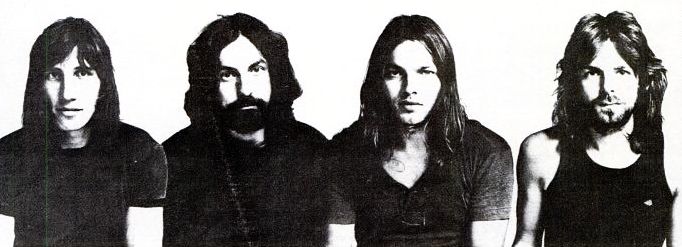
The Eagles – Their Greatest hits (1971-1975)
Their Greatest Hits sold so much that it stands at six million copies ahead of its closest competitor in the classic rock category.The album was certified “platinum” as it has sold over 29 million copies in the US alone.
Led Zeppelin – Led Zeppelin IV
Led Zeppellin’s fourth studio album racked up an impressive figure and holds position of being the best-seller in the original single-disc all-time rock album. The album featured classics like “Black Dog,” “Rock and Roll” and “Stairway to Heaven” and has sold 23 million copies in the US alone. It eventually went on to become one of the best-selling albums ever with over 37 million units sold.
Pink Floyd – The Wall
The Wall is Pink Floyd’s best-selling classic rock album, having sold over 23 million units in the US. The double disc set featuring songs that highlight the death of a young boy’s father, abusive school teachers and an overprotective mother — which helped the group deliver some superb music that left classic rock enthusiasts coughing up all of their cash to get the album.
AC/DC – Back in Black
After the death of their first lead singer Bon Scott, few would have predicted that AC/DC would bounce back – and bounce back even more with an incredibly successful album that would eventually sell over 22 million copies. Black in Back, AC/DC’s first album new vocalist Brian Johnson at the helm, became a rock masterpiece. Its success further fueled the group to produce a fine set of anthemic rock songs that continue to thrill generations of rock fans up to the present
Fleetwood Mac – Rumours
Fleetwood Mac ruled their music and delivered Rumours either through the many romantic traumas or drug and substance abuse. Whatever the motivation was, Rumours rose to the top 10 of the Billboard 200 and has sold 20 million copies globally, earning multi-platinum status.
The Beatles – The Beatles
The Beatles’ self-titled 1968 double LP – more popularly known as “The White Album” — was released 18 months after their seminal album Sgt. Pepper’s Lonely Hearts Club Band. It came out at the time when the relationship between the band mates continued to sour – thus the album’s eclectic but discordant nature. The Beatles is also an earliest known example on how a double-album release could blow up sales. The Beatles may have sold 1.5 million less than Sgt. Pepper. But since each of its two discs is counted as one sale, The Beatles‘ official sales stand at 19 million.
Guns N’ Roses – Appetite for Destruction
Guns N’ Roses’ Appetite for Destruction is significant in classic rock history because of a couple of things: one, it is generally viewed as the album that single-handedly put an end to “hair metal” (although some critics still do refer this album as a “hair metal” record). And two, it became the most successful debut album of all time, having sold around 30 million copies worldwide (including over 18 million units in the US alone) and topping the Billboard 200 chart.
Boston – Boston
While Guns N’ Roses’ Appetite for Destruction is the best-selling debut album of all time, Boston’s self-titled first LP is the second most successful, having sold 17 million copies in the US alone. Not bad for front man Tom Scholz who recorded it in his apartment basement. The album’s singles, most popularly “More Than a Feeling,” still receives heavy airplay on most classic rock radio stations today.
The Beatles – 1967-1970
Another Beatles double-album release that makes to the best-sellers list is 1967-1970 (aka “The Blue Album”), which contains hits released from the latter period of the band’s career. It was released together with 1962-1966 (aka “The Red Album”).
The Eagles – Hotel California
Hotel California is generally considered as the peak of The Eagles’ creativity and commercial appeal. The album’s title track, with its Latin-influenced folk rock, became a million-selling hit and has since enjoyed numerous covers.
Paul McCartney – Band on the Run
Among all the ex-Beatles launching their own solo careers, Sir James Paul McCartney is the most commercially prolific and successful. One of the crowning moments of his career is his third studio album along with his band Wings. Band on the Run was and remains McCartney’s most successful post-Beatles album, critically as well as commercially.
Elton John – Goodbye Yellow Brick Road
The colorful English singer-songwriter and pianist is one of classic rock and pop’s most creative and prolific geniuses. Goodbye Yellow Brick Road came out during the peak of his career, critically as well as commercially. It remains his best-selling album and still the darling of critics and fans alike. It contains songs such as “Candle in the Wind,” “Bennie and the Jets,” “Saturday Night’s All Right for Fighting,” as well as the title track.
Eric Clapton – Unplugged
Unplugged became immensely successful largely because of the single “Tears in Heaven,” a mournful ode to his late young son Conor. It also features an acoustic version of “Layla,” his old hit with Derek and the Dominos. It sold 26 million copies, becoming Clapton’s best-selling album of his career as well as the best live album of all time.
Bob Dylan – Blood on the Tracks
Although Bob Dylan has denied that Blood on the Tracks was based on his failing marriage, the songs say otherwise. In fact, their son Jakob himself has described the songs as “my parents talking.” Blood on the Tracks remains Bob Dylan’s most critically and commercially successful album, and is ranked #16 on Rolling Stone‘s “500 Greatest Albums of All Time.”
David Bowie – Blackstar
David Bowie’s 25th studio album Blackstar was released on January 8, 2016, coinciding his 69th birthday. Sadly, it was going to be his last too, as he died only two days after. His death prompted shock waves from his fans around the world. It was only then where they learned he had been secretly battling liver cancer for months.
Blackstar met wide critical acclaim and commercial success. It became Bowie’s best-selling album — even outselling his earlier classic rock ones such as The Rise and Fall of Ziggy Stardust and the Spiders from Mars. It is Bowie’s only album to hit #1 on the US Billboard 200 chart, making his farewell a bit more bittersweet.
Phil Collins – No Jacket Required
The former Genesis drummer and lead singer finally hit his stride with his third solo album No Jacket Required in 1985. Stellar guest performers aside (Sting and Collins’ ex-Genesis mate Peter Gabriel), the album also features memorable pop tunes like “Sussudio” and “One More Night.” The album sold over 25 million copies worldwide, which further solidified Collins’ status as one of the popular male pop and rock vocalists during the 1980s.
Classic Rock – Influence on Culture

Many classic rock bands and performers wasted no time in expressing their feelings and ideas. It is no doubt that they influenced the populace during their era. Led Zeppelin, The Beatles and The Rolling Stones are just a few to mention that changed the landscape.
Importance of Rock Music
Rock music is one of the most popular genres in music today and is enjoyed by people of all ages and walks of life. One of the many reasons rock has a special place in many people’s hearts is its unique sound which can sound powerful and emotional. Thus, it is excellent at portraying a wide range of emotions efficiently. Rock can be used to express happiness, sadness, anger and more.
Rock music and all its different types have proven to be a powerful force in people’s lives as it helps them express themselves and connect with others. It is also commonly used to relieve stress, and you can even use it to escape from your everyday world.
Types of Rock Music
Rock music can be divided into various different subtypes, including classic rock, punk rock, glam rock, math rock, progressive rock, synth rock and more. The first genre appeared in the early 1950s and gradually spread to other parts of the world. Rock was heavily influenced by different genres as well. Blues, classical, country and pop had a notable influence on the rock genre.
Rock music also went through a number of evolutionary phases to evolve into the genre we hear today. There are subgenres for each of those genres, including Heavy Metal and Rockabilly.
How Has Rock Influenced Music Today?
Rock music has had a significant impact on the music industry. Firstly, it has shaped the sound and sound of popular music over the years as composers started to see the appeal of the genre and included elements in their songs. Secondly, rock music has helped create and influence new genres of music. Punk rock, alternative and metal are all heavily inspired by rock music. Thirsty, the genre has been a major contributor to the development of new technologies within the music industry. Recording studios, the electric guitar and the amplifier all came about thanks to rock music.
Rock bands such as Rolling Stones have also had a massive impact on the music industry, and their influence in almost every genre of music is undeniable. Although their early work is based on blues, they soon evolved and created a unique rock and roll style that combined elements of blues, R&B and garage rock.
Classic Rock Artists and Bands
Led Zeppelin
Back in the day,Led Zeppelin held a tag for being “quintessential purveyors,” depicting and oozing a new aura of masculinity and aggressiveness in their sexually-driven rock style of music. During the peak of the band’s career, the counter-norm culture was gathering momentum. The United States Army was withdrawn from Vietnam and the Cold War was gaining as Russia and the United States cooled off interests in weapons development. There were also political tensions in the forms of the Watergate scandal, stagflation and oil crisis. Zeppelin’s music thus came at a point were change was in demand and their infamous “cock rock” vibe sought to describe the influence that the band had on their listeners in a wide array of matters as serious as group’s political views and as amusing as the band’s fashion.
People wasted no time in adopting the bands style and appearance in a bid to reek of sexy. Led Zeppelin pioneered the widespread “big hair” of the ‘80s, and went on to influence other celebrities’ clothes and jewelries, and other fashion accessories. The classic rock legends are the source of inspiration for the tight band T-shirts and hipster flares, side-laced slim jeans, shaggy haircuts, and scarves that ruled during their time. Their unique vestiary style is still adopted by several artists in the rock and roll genre up to present. The Zeppelin impact also inspired many of today’s top musicians to pursue their dreams. Bands like Aerosmith, Guns n Roses, Metallica, Red Hot Chili Peppers and other influential names have admitted to the Led Zeppelin influence in their careers and aspirations. For Led Zeppelin, rock and sound themselves are not enough; the band embodies all the myths surrounding rock all by themselves; from dry ice, lasers, mysterious album covers to mystical lyrics, decadence, rebellion, sex, drugs, epic solos and larger-than-life anthems, Led Zeppelin set their standards for what rock stardom should embody.
The Beatles
With the Beatles came the “Beatlemania”; the four English mop tops had such an impact on the US that their culture and influence opened the way for an influx of other British artists, creating the phenomenon that was dubbed as the British Invasion. At their time of arrival, garage rock had already begun in the US and its concept in rock music was already being embraced. It would, however, take the appearance of the Beatles on The Ed Sullivan Show to give the movement a ground-breaking exposure as the Fab Four were being watched by a record-breaking 73 million viewing audience. It came at the right smack as America was still mourning over the death of President John F. Kennedy. No more than one week after the Beatles’ first appearance on The Ed Sullivan Show, the whole of America had become a huge music stage for the young Americans who began playing guitars and performing in bands. Many began to grow their hair long to match this new “Beatles” hairstyle. The prize gift to win the heart of young boys was non-negotiable – a guitar or nothing. So high was the Beatles’ influence on kids and rock star wannabes that Tom Petty, a rock artist who had played for two garage bands in Florida, once discussed the motivation he received from the Beatles towards joining a band. Petty also recalled the popularity of the Beatles everywhere that one would literally find it impossible to drive through any neighborhood without hearing strains of garage bands playing. For America, The Beatles almost single-handedly rekindled America’s hopes, dreams and aspirations that had been temporarily quenched by Kennedy’s assassination.
Music aside, the Beatles also made a large impression on style and fashion during their heyday. The “mop top,” which was the Beatles’ trademark haircut, was adopted by many who coined the name due to its resemblance to “Arthur” haircut or a mop. It sported a mid-length hairstyle which has a straight cut that spans to a collar length behind and over the ears by the sides with a straight fringe. The mop top was quickly embraced and loved among rock fans especially during the early and the mid-60s, and even became a commercial success that toy manufactures began production of real-hair and plastic-made “Beatle wigs.” The Lowell Toy manufacturers in New York held the license to make what was considered the only original Beatle wig, but it proved to be so popular that many counterfeits had sprung up. Once the mop-top became established, everyone was itching to get a taste of the Beatles; from comedians who wore the wig to easily thrill their audience, to fashion designers who competed to get approval to use the word “Beatle” on everything they made.
While there is no telling how far the influence of the Beatles went, in November 1963 there were endless newspaper reports that made headlines about schoolboys who were expelled because of sporting their long Beatles-style hair. Even apprentices who dared to have the mop-top were not allowed into factories because of their rebellious looks.
In 2003, Mikhail Safonov said that in Soviet Union, mimicking the Beatles hairstyle was a show of strong rebellion. The elders who didn’t particularly dig the hairstyle adopted the tag “hairies” for those who embraced it. So serious was the issue that people who even just fancied to have that haircut were arrested and made to take another haircut at several police stations.
It might seem funny that some sort of long hair could be so much of a big deal, but unlike today, long hairstyles were chiefly associated with a few musical artists that were considered eccentric, as well as highly religious people who would leave their hair (as well as facial hair) to grow in the Jesus Christ style. It was not until the arrival of the Beatles that the style became acceptable, even desirable for men. In 1966, the British men started sporting facial hair and wasted no time in pioneering the explosion of the full-blown hippie trend. The long hair remained a sign of nonchalant consideration for societal norms but as the 70s neared, the movement simply became rather a “hair-do” and lost the immoral “hair-don’t” that it had earlier been branded.
The rebel image that the Beatles put on continued with media interviews and Beatles’ feature films. Unlike the rock and roll darlings like Elvis Presley who had successfully gotten the impressionable young people on board with their rebellious but subtle tones, The Beatles otherwise made it clear that they were a group with free wills. Several interviews where shady questions were thrown at the Fab Four, saw epic responses that contrasted the docile and ever-tolerant responses that pressmen were used to getting from Elvis.
In their first feature film A Hard Day’s Night (1964) the Beatles are depicted to disrespect the authorities with a scene towards the end that shows the police chasing the quartet. Their next film, Help! (1965) played a major role in integrating a new approach to music films in Britain, this subsequently led to the production of many other movies in the same tone and model. The popularity of A Hard Days’ Night and Help! further fueled the explosion of the “swinging London” and British film productions were eager to capitalize on this phenomenon, often with American studios backing them financially. These include numerous spy films such as James Bond movies (which are a significant contribution of the British to world cinema), as well as other films such as The Knack (and How to Get It) (helmed by A Hard Days’ Night director Richard Lester), Darling, Georgie Girl, Blow Up, Alfie, Bedazzled, Joanna, and many others.
Beatlemania was ever more far-reaching than anticipated, that it even caught the scrutiny and interest of sociologists. Even in areas where the group were not allowed to perform like the Soviet Union, a legendary description of their influence is given by sociologist Artemy Troitsky, who said that the Beatles had started a huge movement in the Soviet Union among many “inner immigrants” who lived in the country, while residing elsewhere spiritually and mentally. London Evening Standard published an article on March 4, 1966 entitled, “How does a Beatle live? John Lennon lives like this.” The paper gained notoriety for John Lennon’s remark that sparked widespread outrage: “Christianity will go. It will vanish and shrink. I needn’t argue about that; I’m right and I’ll be proved right. We’re more popular than Jesus now; I don’t know which will go first – rock ‘n’ roll or Christianity. Jesus was all right but his disciples were thick and ordinary. It’s them twisting it that ruins it for me.” While Lennon’s comment did not provoke any controversy in the UK, in America it was a totally different story. His “more popular than Jesus” remark drew a fiery outrage which quickly spread particularly across in the Bible belt region of America. The affair did very little to shake the Beatles’ popularity but is very much worth mentioning to show the depth and outstanding reach of the Beatles and their damn-the-consequences attitude that led to their unrivaled stance as trendsetters.
Elvis Presley
During his height of popularity in the 50s throughout the 60s, Elvis Presley presented a self-selling vibe that spread across an appreciable number of age group which mostly consisted of near-teens, early teens and adults. Elvis’ quest to keep a glamorous appearance at all times were quickly mimicked by many of his fans. In his time, Presley sported a unique ducktail hairstyle; his fashion tastes included loose open neck shirts with black slacks and boot-cut pants. It didn’t take long for fans to adopt the new clothing fashion and hairstyle.
The cultural impact that Elvis Presley left is something that cannot be underestimated. His popularity triggered a staggering demand from teenagers – even kids as young as ten years old – to buy his records. His sense of fashion also prompted a demand for “ducktail” haircuts, black slacks, blazers, and loose shirts among teen boys and young male adults. This led to numerous stores to introduce a new clothing line for men. Teenage girls, who had been enamored with Presley’s music, voice and good looks, would beg their parents to buy them pink portable 45 rpm record players for their own bedrooms. More and more American teenagers started to buy portable transistor radios to listen to rock and roll music no matter where they went.
Elvis’ influence, as a result, led to the heavy investment in the youth generation and his success paved the way for teens to assert more independence, which caused their parents and elders to raise their eyebrows. Elvis’ records, dance moves, fashion sense and personality soon became the everyday norm and embodiment of rock and roll among teens as well as young adults. You may also read our article about How Elvis Presley Still Earns Millions Today.
Bob Dylan
Legendary folk singer-songwriter Bob Dylan was one of the earliest influencers who encouraged a counterculture behavior through many social and political unrests. His songs gained fame (as well as notoriety) in the 60s and posed as the “voice” of his own generation whose anthems covered addressed a number of American anti-war and civil rights campaigns.
Dylan, not surprisingly, also courted controversy during the peak of his fame as he “went electric” at the Newport Folk Festival in 1965. Armed with a Fender Stratocaster and backed by an electric band, Dylan’s performance drew mixed reactions from the audience. Folk purists roundly condemned Dylan for playing with an electric band, calling him a “traitor” to folk music. They even threatened to cut the power cables with an ax. Other people in the audience were either shocked, or were cheering enthusiastically for Dylan. But there is no doubt about it – the “Dylan goes electric” controversy provided a pivotal moment in the development of the folk-rock genre.
Dylan’s songs were considered unique during his time and had a deeply rooted connection to poetry; for the youths, Dylan was the one thing that brought back a lot of lost interest in poetry and literature as his song writing and musical influence were inestimable. The Beatles were widely influenced by Dylan and his 1960s work that featured most of his introspective and confessional song writing style. Several of his political-themed songs gained ground. In Dylan’s third album titled The Times They Are a-Changin’ (1964), Dylan discusses volatile topics such as poverty and racism; he is also known for writing possibly the world’s first anti-love song “It Ain’t Me, Babe.” Bob Dylan also had major influences on changing what was deemed acceptable in songs, it was not until Dylan released “Positively 4th Street” and “Like a Rolling Stone” — two songs that made nasty lyrics sound beautiful that pop singers and other musicians were afforded a new vista of themes for music and tapped into the lovey-dovey setting.
The Rolling Stones
The Rolling Stones‘ influence has spanned many aspects in their golden era. As for the culture, The Rolling Stones were the embodiment of the “bad boys” look and swag of rock and roll. Initially, the band had to go with the Beatles-esque look with the matching suits and ties. However, they eventually ditched the concept for a look that did very little to show conformity and subtlety. The Rolling Stones managed to successfully eschew comparisons to their peers (and rivals) The Beatles. Soon, they rose to fame with rebellious music and lyrics that fueled counter-cultural ideologies in the youths of America.
The Stones were a direct contrast to the Beatles and did not concur with the peace and love vibe that many had become accustomed to in the 60s. Instead, their lyrics carried themes that were based on the events plaguing the world such as wars, and included topics like sex and violence that were considered too taboo at the time in mainstream music at the time. Every band has its main audience, and The Rolling Stones’ fan base mostly consisted of college kids. Their music, fashion sense, stage presence and even their scandal-ridden lifestyle were emulated by their fans who used their music as a tool for breaking the tide of conformity in the society.
Other than that, The Rolling Stones were also one of the important figures of the blues-rock movement as they helped popularize the genre during the 1960s. However, they also experienced a short period of musical experimentation, as illustrated by their psychedelic album Their Satanic Majesties Request in 1967. They have influenced future acts such as Aerosmith, Iggy Pop and the White Stripes, among others.
Classic Rock Symbols
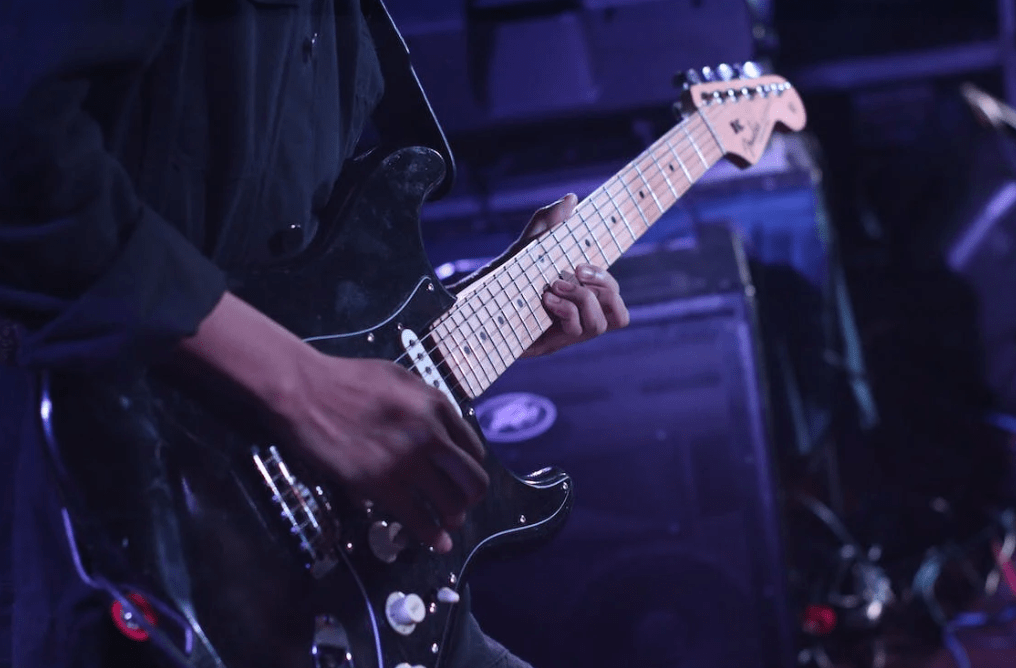
As classic rock evolved from the 40s/50s to the 80s, several elements and symbols were adopted and became increasingly synonymous with the music and bands.The most popular symbols and signs that are most acquainted with rock and roll include: the electric guitar, Elvis’ microphone, the “Tongue and Lip Design” of the Rolling Stones, the lightning bolt and the hand horn symbol.
The electric guitar can be dated as far back as the 30s, but its prominence and widespread use became dominant during the 50s. The electric guitar quickly became a major instrument of rock and roll, and Les Paul’s adoption of the guitar in the 1952 did very well to sell the idea of pure electronic sounds as basis for rock music.
Unlike Les Paul who created the Gibson Les Paul electronic guitar, the legendary Elvis microphone was not invented by the superstar but got the tag due to Elvis’ frequent use of the mic. The iconic microphone is actually the 1955 Shure Unidyne microphone which has since become an enduring symbol of rock and rollers, as well as standard pop crooners, over the years. Long hair has also been strongly associated with rock and roll; although many bands wore a long hairstyle such as Led Zeppelin, The Beatles and many others, its Elvis’ curly hair that has been mostly associated with the music.
The lightning bolt was first synonymous with the Australian rock band AC/DC. The bolt has been used to depict the enormous amount of vibe and energy that classic rock music oozes to the awe-struck fans of the album-oriented rock format. This symbol is also popular due to the biblical-sounding title of AC/DC’s Let There Be Rock album.
For classic rock and roll, the “Tongue and Lip Design” is one of the most memorable and widely familiarized band symbol ever. The logo that has been dubbed as “hot lips” that was first created in the 1970s by John Pasche, the British graphic designer who came up with the logo after spending a few minutes with Mick Jagger. The logo was initially to be made to resemble the Hindu goddess of energy – Kali, but Pasche used Mick Jagger for the inspiration painting a not-so-discrete logo of what surely looks like Jagger’s mouth. The symbol has since been the Rolling Stone’s logo and has also been popularly associated with rock and roll.
Put your index fingers up and the middle fingers down. Let your pinky up and leave the thumb in and you’ve got yourself doing the hand horn. The hand horn has become so popular that it is regarded as a standard salute between rock artists and their fans. The concept was taken off at concerts where Ozzy Osbourne had flashed double peace signs, which was further popularized by Ronnie James Dio who thought the band would never be the same after Ozzy’s exit. Nowadays, this hand gesture simply indicates a kind of musical ecstasy to which what one would describe as “Hell yeah!” in today’s modern English vocabulary.
Classic Rock Dress and Fashion
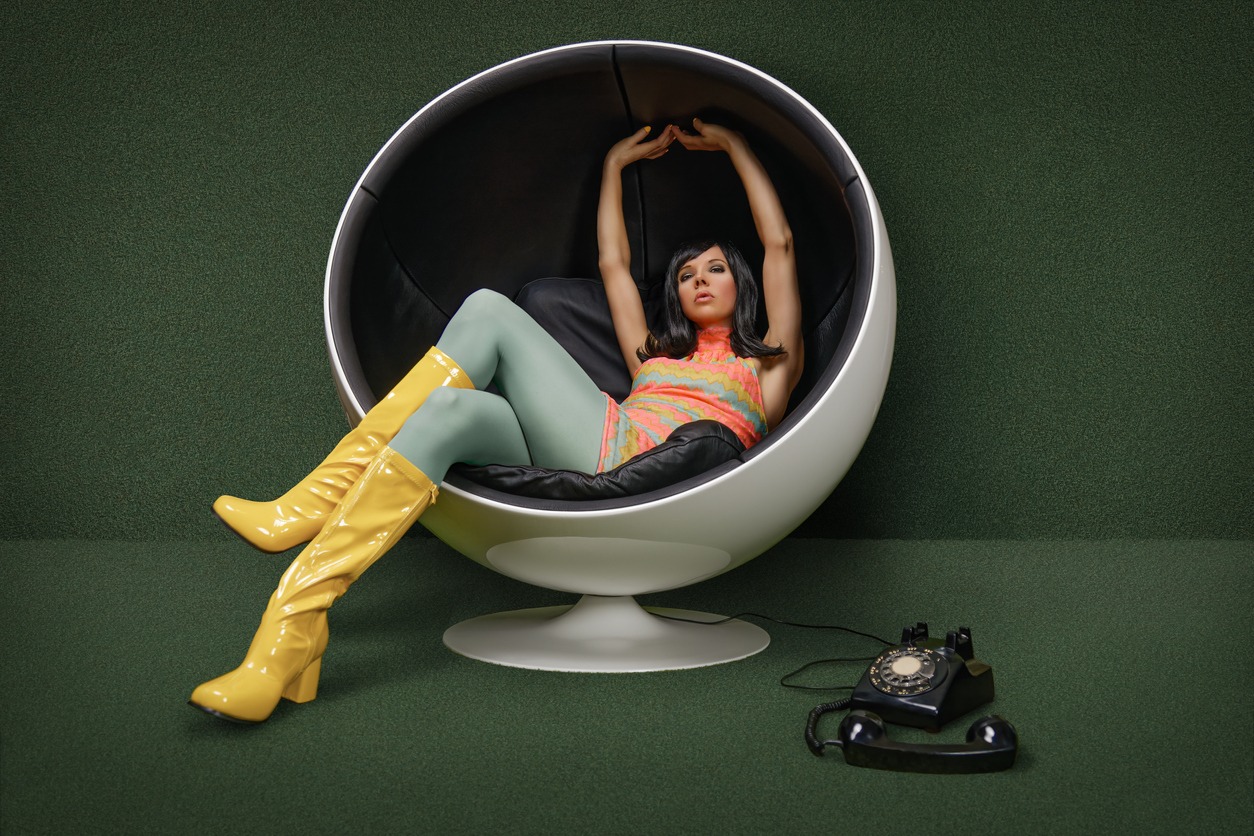 During World War II, everything was rationed – including fabric – and this greatly affected the fashion industry as a whole. Following the end of the war, fabric excess was back, prompting inspirations for new fashion trends. During the 1950s women began to wear free-flowing “balloon” skirts and pretty tops, while men go sleek, comfy and casual with suits and ties, as well as sweaters and cardigan shirts.Don’t hesitate to learn more by checking out leather bags.Then with new influences such as the popularity of rock and roll, and films like as Rebel without a Cause starring James Dean, a whole new fashion trend ushered in that primarily aimed at teenagers and young adults. Teen boys in particular began to sport leather jackets, tight denim pants, sneakers and greased-up hairstyles which many of their elders began to consider as gesture of rebellion and non-conformity.Elvis Presley’s popularity is enduring not just because of his voice and music, but also because of his smart and fun dressing style – he’s got the whole package, so to speak. As he performed his hits such as “Jailhouse Rock,” “All Shook Up” and “Blue Suede Shoes” on stage, he swiveled his hips and wore wide-shouldered jackets and loose free-flowing slacks that went with his “suggestive” gyrations. Whenever he was off the clock, he would go for a more casual style — high-waisted trousers and a striped shirt or a Cuban collared shirt.Men’s fashion during the 1950s was conservative, mostly consisting of a coat-and-tie ensemble. It was sleek but it could be drab and boring at the same time. But Elvis broke the fashion mold by experimenting different combinations of colors, textures and patterns to create a look that was truly his own – no wonder, young men wanted to copy his style. Truly, Elvis is not only “The King” of rock and roll, but also of fashion. His signature looks never go old; even in the 21st century, many style-conscious men (singers or not) can be still seen sporting the “Elvis look.”Many people would argue that the greatest moments in fashion history come from the 1960s. After all, many of the prevailing styles of today have their roots in 1960s fashion. Although television was invented earlier, it started to rule during this decade as the “boob tube” had become commonplace in American households. Because of television, many people were now able to watch music artists and groups in the comfort of their homes. They would copy not just their idols’ musical style and onstage mannerisms, but also their sartorial style.
During World War II, everything was rationed – including fabric – and this greatly affected the fashion industry as a whole. Following the end of the war, fabric excess was back, prompting inspirations for new fashion trends. During the 1950s women began to wear free-flowing “balloon” skirts and pretty tops, while men go sleek, comfy and casual with suits and ties, as well as sweaters and cardigan shirts.Don’t hesitate to learn more by checking out leather bags.Then with new influences such as the popularity of rock and roll, and films like as Rebel without a Cause starring James Dean, a whole new fashion trend ushered in that primarily aimed at teenagers and young adults. Teen boys in particular began to sport leather jackets, tight denim pants, sneakers and greased-up hairstyles which many of their elders began to consider as gesture of rebellion and non-conformity.Elvis Presley’s popularity is enduring not just because of his voice and music, but also because of his smart and fun dressing style – he’s got the whole package, so to speak. As he performed his hits such as “Jailhouse Rock,” “All Shook Up” and “Blue Suede Shoes” on stage, he swiveled his hips and wore wide-shouldered jackets and loose free-flowing slacks that went with his “suggestive” gyrations. Whenever he was off the clock, he would go for a more casual style — high-waisted trousers and a striped shirt or a Cuban collared shirt.Men’s fashion during the 1950s was conservative, mostly consisting of a coat-and-tie ensemble. It was sleek but it could be drab and boring at the same time. But Elvis broke the fashion mold by experimenting different combinations of colors, textures and patterns to create a look that was truly his own – no wonder, young men wanted to copy his style. Truly, Elvis is not only “The King” of rock and roll, but also of fashion. His signature looks never go old; even in the 21st century, many style-conscious men (singers or not) can be still seen sporting the “Elvis look.”Many people would argue that the greatest moments in fashion history come from the 1960s. After all, many of the prevailing styles of today have their roots in 1960s fashion. Although television was invented earlier, it started to rule during this decade as the “boob tube” had become commonplace in American households. Because of television, many people were now able to watch music artists and groups in the comfort of their homes. They would copy not just their idols’ musical style and onstage mannerisms, but also their sartorial style.
It just came at the right smack when the Beatles made their first major TV appearance at The Ed Sullivan Show in February 1964 and 73 million people tuned in to watch these four young Liverpudlians charm the American audience. Fans would be enchanted not just by the fresh sound that they brought to American shores – that would be later known as “Merseybeat” or “beat music” — but by their appearance too: tight trousers, pointed boots (which they called “winklepickers”) and most especially their haircut which became popularly known as “Arthur” or “mop top.” Fans quickly wanted to grow their hair long like the Beatles. Exasperated parents saw the new hairstyle as a form of rebellion or disrespect, and they would do anything just to cut their kids’ hair!
The Beatles’ stratospheric rise to fame signaled a phenomenon called the “British Invasion” where bands from the UK such as The Rolling Stones, The Kinks, The Dave Clark Five, Herman’s Hermits, as well as solo acts like Dusty Springfield and Petula Clark, started to occupy the American charts and airwaves – and the Western fashion scene as well. London quickly became the center not just for pop music but also for fashion and art, and a cultural phenomenon was borne out of the English capital called “Swinging London.” A notable subculture also sprang up in London called “Mod” (short for “modern”) which quickly spread in the United States and elsewhere. “Mod” was mostly focused on the “new” and the innovative, and adherents to this sub-phenomenon typically wore stylish and tailored clothing that featured bright and bold colors, geometric shapes, pastels as well as lots of black and white. Mods had a predilection towards the Vespa. Groups like The Who, The Small Faces and others were the proponents of the Mod fashion, which was quickly adopted by fans across the Atlantic and elsewhere.
But it won’t be long as hippie and psychedelic fashion became prevalent as the 1960s were nearing its end. This is where young people in particular became dissatisfied by the societal norms and values, while others strongly opposed the Vietnam War. But whatever their reason was, they began adopting and embracing the values such as peace and love (and free love as well), and this movement was reflected by the songs during that time. The use of psychedelic drugs became prevalent and this effect extended to the rock and folk songs such as “Lucy in the Sky with Diamonds” and “Tomorrow Never Knows” by the Beatles, “Purple Haze” by the Jimi Hendrix Experience, “White Rabbit” by Jefferson Airplane, and many others.
Hippie and psychedelic music and fashion quickly became the rage. Hippies favored dresses inspired by non-Western clothing styles such as Native American, Asian, African, and Latin American. Natural and tie-dyed garments, long, full skirts, loose and flowy pants, and clothes with paisley or floral prints became all the “in” thing at the time. In defiance to corporate culture, hippies often made their own garments and accessories such as beads and headbands; they often walked barefoot or with sandals. Men began to grow moustaches and beards, while both men and women started to grow their hair long, leaving them untreated and natural as they had been.
Like in the past decade, music greatly influenced 1970s fashion. The eclectic, free-handed clothing styles of the late 60s fashion continued to dominate well into the early 1970s. While there were still plenty of hippies in the 1970s, the decade is mostly remembered for one thing – disco. Polyester was the hottest clothing material during this decade, alongside corduroy, velour, and white suits. Platform shoes, bell-bottom pants and sequined material also became popular in 70s fashion and are mostly associated with the disco genre.
Despite disco taking the music scene by storm, classic rock wasn’t left behind – in fact, it became popular than ever with the emergence of ace bands like Led Zeppelin, Pink Floyd, The Rolling Stones, The Who, The Eagles and Queen. Other sub-genres of rock like glam rock, space rock, progressive rock, space rock, heavy metal and punk rock also sprang up, with each of the artists and bands not only brandishing their own sound but also their own stage presence. Most of the band members sported long hair and presented a combination of the laid-back hippies style of the 60s and sartorial sensibilities of the 70s. Flared jeans, velvet trousers, fringed boots, jackets, distressed denim clothing, blazers and Oriental/Native American-inspired jewelry and accessories became the stylistic order of most of the 70s bands. Some front men could even walk in front of their audience half-naked wearing only jeans and perhaps a long necklace on, and still managed to rock the stage.
Most classic rock bands kept things pretty simple and laid-back during their downtime, but whenever they were onstage, it was a totally different story! Some bands like KISS and Alice Cooper even wore garish makeup as part of their on-stage stunts – you won’t recall these bands without mentioning their make-up as it became part of their identity and fame.
David Bowie was also a trendsetter during his time. Like his music, Bowie’s fashion sense continued to evolve throughout his life and career. He was an innovator in fashion as much as he was the same in music. From the androgynous spaceman Ziggy Stardust to his well-dressed, theatrical Thin White Duke persona, his style file mostly reflected the music that he made. Whether that either raised eyebrows or launched trends, there’s no doubt that his style was unique – only his and his alone.
As punk rock became rose to popularity by the mid-1970s (spearheaded by bands such as Ramones and The Sex Pistols), along came punk fashion which was characterized by the negation of anything excessive and pretentious that was typically exhibited by “hair” rock bands of the era (or even mainstream music and culture in general). Sporting unkempt, simple shirt-and-jeans ensemble, and haircuts as short as their songs, the dressed-down look was the characteristic style of punk fashion, although there are some things like jackets and vests that were added with studs and/or logos that expressed their musical preferences or socio-political views.
Among the many other fashion and styles that reflect the many sub-genres of rock, punk rock fashion is probably the most commercialized, with noted designers such as Jean-Paul Gaultier, Vivienne Westwood and Anna Sui using punk elements in their own clothes.
80s rock fashion is considered by many people as the most outrageous (and ridiculous); it was the era of enormous hairs, mullet hairs, mohawks, Spandex, bandanas, sequined gloves, fingerless biker gloves, tight leather pants, oversized leather jackets, ripped clothing, technicolor denims, and padded-shouldered blazers. If you had been a member of the any of the 80s bands and wore any of these things mentioned earlier, then you were considered a cool and bad-ass rocker.
Classic Rock Movies
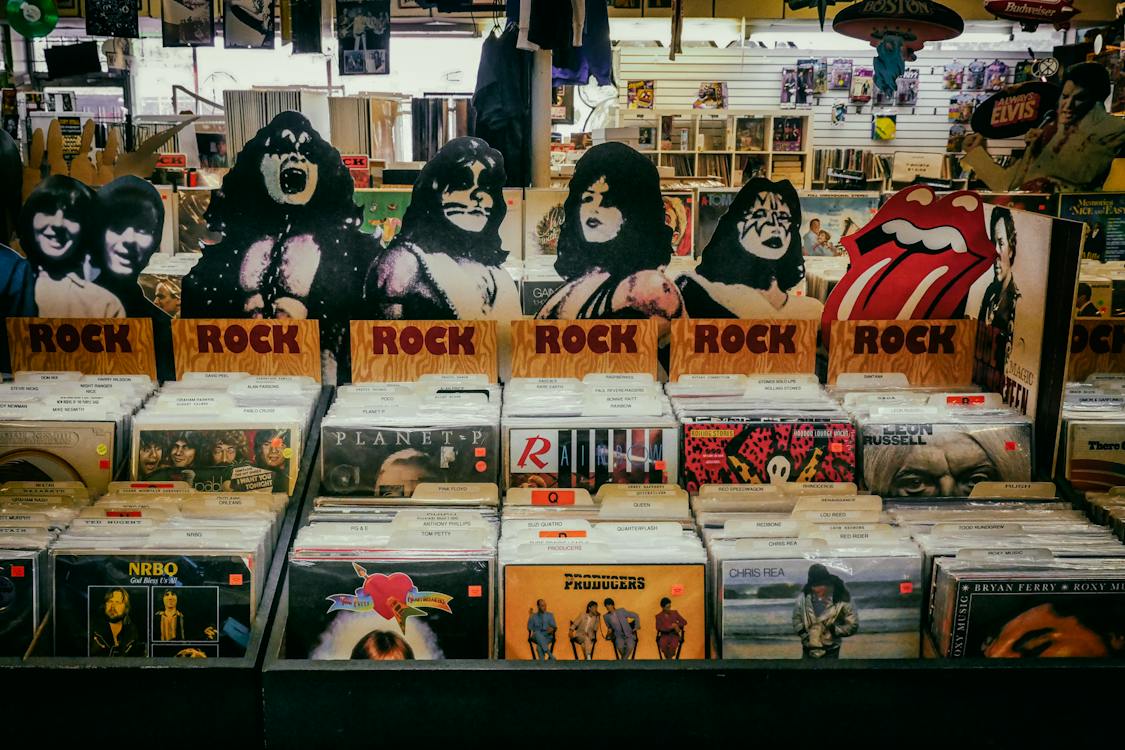
This Is Spinal Tap is a mockumentary of a metal band who’s struggling to get back to the top while highlighting many aspects of several rock and roll with ups and downs, name changes, gold and platinum-selling albums , groupies, promoters, release dates and many behind-the-scenes moments. The comedy/musical movie was a modest box-office success, but as years went on critical re-evaluation has led This Is Spinal Tap to become a cult classic. People tapped into the amusement that came with the movie which has only gotten funnier over the years. Other hits worthy of mention include Almost Famous that comes in the musical/drama genre, describing the life of a 15-year old who is given the chance by the magazine Rolling Stone to pen feature articles about the most prominent bands and artists during her time such as Led Zeppelin, The Allman Brothers, David Bowie and while fending off objections of his protective mother.
In 1982, Pink Floyd also made Pink Floyd – The Wall which was a live action and animated drama with a musical setting, obviously based on their hit 1979 album of the same name. The movie is plotted around a confined rocker who goes by the name of Pink, visualizing his travails, and the metaphorical (and at times physical) wall that he has put up to protect himself from the emotions and the world after he has been driven to insanity by the loss of his father and the many phases of depression during this lifetime. The main character of the movie, Pink (played by Bob Geldof), reflects on an isolated childhood within the confinement of his Los Angeles hotel room.
Movies about classic rock continued to spring up as documentaries, comedies and musicals aimed at giving the average music fan deeper and more detailed insights of the rock and roll lifestyle. Other top classic rock movies that appeared from the 70s up to the 2000s include School of Rock, The Commitments, The Doors, Tommy, and The Runaways.
From their most active years (1963-1970) the Beatles starred in five films: A Hard Day’s Night (1964), Help! (1965), Magical Mystery Tour (1967), Yellow Submarine (1968) and Let It Be (1970).
Despite being a loosely-scripted mockumentary, A Hard Day’s Night exactly captured the Beatles’ inimitable wit, charm and happy-go-lucky attitude despite struggling with the height of the new phenomenon which was Beatlemania. Director Richard Lester seamlessly synchronized the Beatles’ music and imagery together, something which provided the basis of MTV which would debut 17 years later.
Help! has a more solid storyline, about Ringo finding himself as a sacrificial target of a religious cult. The film is perhaps the most watchable (and picturesque) of all the other Beatles films, as the hilarious pursuits take the band from the Austrian ski slopes to the beaches of Bahamas, which were all shot in color. The film might be pretty dated in today’s standards, but the songs in the movie as well as on the accompanying soundtrack LP, will remain pop and rock classics.
Yellow Submarine is an animated feature released in 1968. The film’s antagonists, the Blue Meanies, attack the music-loving denizens of Pepperland, and the only survivor Lord Admiral seeks help from the Beatles to save Pepperland from the enemies. None of the Beatles voiced the parts, which were instead done by actors. Despite aiming at a younger audience, Yellow Submarine is not without the puns and dry English humor. The surreal psychedelic animation style reminds one of Monty Python’s Flying Circus – in fact, the movie paved the way for Python Terry Gilliam’s animated interludes for their TV programs Do Not Adjust Your Set and Flying Circus.
Magical Mystery Tour is a TV film released on Boxing Day, 1968. In it, the Beatles take a surreal mystery tour through the English countryside. The film may be a disaster at the time of its release, but the soundtrack album is a critical and commercial success. Songs featured in the film and on the album include “I Am the Walrus,” “The Fool on the Hill,” “Hello, Goodbye” and the title track – all of which are now classic rock gems.
Let It Be is a fly-on-the-wall documentary that captures the group recording their final album of the same title. The fun frolicking and the goofiness were all gone; instead the film shows some tensions running high among the group members (most infamously the one between Paul McCartney and George Harrison bickering over how the guitar part should be played). It’s a raw, revealing and bittersweet look the Beatles while they are on the process of recording the album, which culminates at the now-legendary impromptu concert at the rooftop of Apple building. Songs include “Get Back” and the title track.
Popular Artists Quotes and Commentary on Classic Rock
 Like all types of music, rock and roll is a form of expression. Even though many rock stars are known to be a bit too inebriated to mouth off intelligible words, somehow they have managed to wax meaningful quotes and words of wisdom on classic rock and anything that’s associated with it.In fact, artists are never short of colorful commentary and expressions with respect to music, culture and the influence of rock. Here are some of the more well-known quotes from the world of classic rock:
Like all types of music, rock and roll is a form of expression. Even though many rock stars are known to be a bit too inebriated to mouth off intelligible words, somehow they have managed to wax meaningful quotes and words of wisdom on classic rock and anything that’s associated with it.In fact, artists are never short of colorful commentary and expressions with respect to music, culture and the influence of rock. Here are some of the more well-known quotes from the world of classic rock:
“Before Elvis, there was nothing. It is no doubt that Elvis brought both electrifying presence and significant change to rock and roll, and modern-day pop culture has a lot to be indebted to him for” – John Lennon idolizing and reiterating the invaluable importance and contributions of Elvis Presley to classic Rock
“Christianity will go. It will vanish and shrink. I needn’t argue with that; I’m right and I will be proved right. We’re more popular than Jesus now; I don’t know which will go first – rock and roll or Christianity.” – John Lennon on the influence and cultural apex of the Beatles. The Fab Four’s front man would eventually receive many backlash about his comments, for which he would later apologize.
“If you tried to give rock and roll another name, you might call it ‘Chuck Berry” – John Lennon’s acknowledgment of the class and quality of another rock and roll artist, Chuck Berry
“If it’s illegal to rock and roll, throw my ass in jail!” – Kurt Cobain on rock and roll by sparking a rebellious tone against those who would condemn the music
“What would rock and roll be without ambition, craziness, danger, and fun?” – Pete Wentz eulogizing all the entrapments of pure rock and roll
“Rock and roll is the hamburger that ate the world” – Peter York on the immense popularity and influence of rock and roll worldwide
“Elvis may be the King of Rock and Roll, but I am the Queen” – Little Richard
“Rock and roll keeps you in a constant state of juvenile delinquency.” – Eddie Spaghetti on the roller-coaster rebellion that rock and roll inspires
“We believed that anything that was worth doing was worth overdoing.” – Steven Tyler
“I’m not God but if I were God, ¾ of you would be girls, and the rest would be pizza and beer.” – Axl Rose of Guns n’ Roses
“Jazz, isn’t that just a series of mistakes disguised as musical composition?” – David St. Hubbins of Spinal Tap
“Rock and roll is a nuclear blast of reality in a mundane world where no one is allowed to be magnificent.” – Kim Fowley, former manager of the Runaways
“Rock and roll music, if you like it, if you feel it, you can’t help but to move to it. That’s what happens to me. I can’t help it” – Elvis Presley
“I am classic rock revisited, I revisit it every waking moment of my life because it has the spirit and the attitude and the fire and the middle finger. I am Rosa Parks with a Gibson guitar” – Ted Nugent
“Why would you want to be anything else if you’re Mick Jagger?” – Keith Richards
“Rock and roll is the most brutal, ugly, desperate, vicious form of expression it has been my misfortune to hear” – Frank Sinatra on rock and roll
“It’s boring to be 70, I don’t want to be there, I’ll be dead and gone, I don’t have any aspirations to be 70…” – Freddie Mercury
“They’d say ‘if ya play the record backwards, you can hear evil things like grrrr!’ and I would think, ‘Jeez, I didn’t know the devil sounded like that.’ I thought he was coherent, like the rest of us.” – Brian Johnson of AC/DC
“I used to jog but the ice cubes kept falling out of my glass.” – Dave Lee Roth of Van Halen
“Just because I cut the heads off dolls doesn’t mean I hate babies, I just hate dolls.” – Alice Cooper
“I’m a family oriented guy; I’ve personally started four or five this year.“ – David Lee Roth of Van Halen
“Classic rock radio gave us our longevity.” – George Thorogood
“You see, rock and roll isn’t a career or hobby – it’s a life force. It’s something very essential.” – The Edge of U2
Classic Rock – The Artists
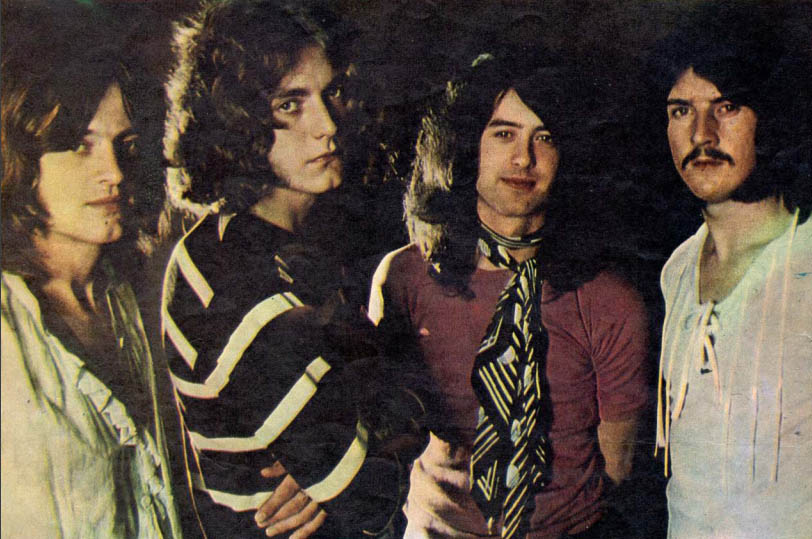 Classic rock featured a significant number of bands and artists, the era of classic rock also saw many one-hit wonders and sold out concerts which makes it quite a daunting task to discuss every song and every band. There are, however, many standout bands and all-time greats that constituted the era and defined the foundations and entrapment of classic rock.
Classic rock featured a significant number of bands and artists, the era of classic rock also saw many one-hit wonders and sold out concerts which makes it quite a daunting task to discuss every song and every band. There are, however, many standout bands and all-time greats that constituted the era and defined the foundations and entrapment of classic rock.
Led Zeppelin
Undoubtedly, Led Zeppelin formed one of the foundations of classic rock. The English rock band was led by guitarist Jimmy Page, with Robert Plant as the lead singer. The quartet smashed sales records in different aspects of music. Despite their rough lifestyles like most rock and roll artists, the band was famous for sold-out concert tours and album sales. Their first self-titled album (released in 1969) set the tone for most of the classic rock sounds that became the rote over the years. By the time the band released their epic double-album Physical Graffiti in 1975, they had become icons and superstars that had established a reputation that would persist up to present day. Led Zeppelin have many songs in the Grammy Hall of Fame and have seen five of their music albums certified as diamond albums. The group’s signature song “Stairway to Heaven” and other notable classics set the true standard for album oriented rock and Bonham’s eclectic and eccentric drumming style brought the “rock” in rock and roll. Led Zeppelin’s members are quite popular, such as Jimmy Page and Robert Plant. However, one of their members, John Paul Jones, is underrated, and most people won’t immediately recognize him. Despite that, he still had a lot of contributions to the band. If you want to learn more about him, read our post, “Who is John Paul Jones in the World of Classic Rock?”
The Beatles
The Beatles had a short yet monumental era. The Fab Four from Liverpool almost single-handedly changed the face of pop and rock, and each of their albums during their seven active years becoming a certified “classic.” From Please Please Me that rocked the music scene in 1963 to their swan song Let It Be in 1970, the Beatles influenced both music and culture, and their impact has even continued for the many decades to come.
Queen
Queen, led by the charismatic Freddie Mercury, is chiefly known for their signature hit song “Bohemian Rhapsody.” The song’s heady and explosive combination of magnificent vocals and sweeping guitar-driven harmonies made quite a powerful impression of music that saw a fine line between rock and opera. “Bohemian Rhapsody” was a hit single on their fourth album A Night at the Opera which was released in 1975. The track – as well as its groundbreaking promotional video that even predated the MTV era – cemented the band’s classic and legendary status as one of rock’s greatest and most electrifying acts. The band also raked in millions of dollars from their best-selling concerts and live tours, coupled with an impressive amount of singles enjoying astronomical commercial and critical success.
Some of the greatest legacies of Queen are their songs that became a staple of most sporting events in the USA, specifically “Another One Bites the Dust,” “We Will Rock You” and, of course, “We Are the Champions.” Other famous Queen hits and noteworthy songs include “Crazy Little Thing Called Love,” “Killer Queen,” “You’re My Best Friend,” “Radio Ga Ga,” and “I Want to Break Free.”
The Rolling Stones
It is practically impossible to complete our list of top classic rock arts without including The Rolling Stones. The fact that the Stones have had a roller-coaster career in their over 50 years in the business and are still going strong is a solid testimony to the lingering power and influence of rock music. The Rolling Stones started their career by producing covers of some of their favorite American artists, and soon made a name for themselves in the rock music world, hitting milestones with their own original tracks, notably “(I Can’t Get No) Satisfaction,” “Paint It Black,” “Honky Tonk Women,” “Sympathy for the Devil,” “Get Off of My Cloud,” and a number of other successful chart placers. The Rolling Stones distinguish themselves from the lot, having adapted to the changing times by incorporating modern musical trends into their own effortlessly. There are so many successful albums in the Stones’ vast catalog, among them Out of Our Heads, Exile on Main Street, Sticky Fingers, Their Satanic Majesties Request, Some Girls, Through the Past, Darkly and Tattoo You being a notable few to mention.
Pink Floyd
Pink Floyd is perhaps a classic model of the cult rock favorites-turned-world-famous rock legends. The band was founded by Syd Barrett and debuted with an LP entitled The Piper at the Gates of Dawn. The album quickly exhibited the music flair and passion that the band held but by 1968, Barrett was out of the group due to his erratic behavior and worsening mental instability that was attributed to psychedelic drugs (most prominently LSD). With the exit of Barrett came the introduction of fresh musical ideas for Pink Floyd that eventually saw hit albums such as The Dark Side of the Moon and The Wall putting the band on the spotlight as one of the most successful and revered rock legends the world has ever seen.
If you are just a new fan of Pink Floyd, then you should not absolutely miss to see the film Pink Floyd – The Wall. It was released in 1982, and its screenplay was written by the band’s singer and bassist Roger Waters. Like the iconic album The Wall, on which the film was based, Pink Floyd – The Wall is a largely metaphorical film, full of symbolism and imagery. The movie centers a confined rocker named Pink. A tortured soul, he has gradually isolated himself from the world after being driven into insanity brought by the tragic memories during his lifetime. Pink Floyd – The Wall garnered critical acclaim at the time of its release, and has since gained a cult status.
Eagles
The Eagles enjoyed laudable success between the 70s and 80s, and became one of the most popular bands in the world during the mid-70s after the inclusion of popular guitarists Don Felder and Joe Walsh to the band. The Eagles became one of the most commercially successful artists who scored several Billboard pop hits, six Grammy Awards and several American Music Awards.
Their fifth studio album, Hotel California (released in 1976), is rated as one of the top 20 best-selling albums in the US according to Recording Industry Association of America (RIAA). It sold over 16 million copies in the US alone, and over 32 million copies globally. The album topped the Billboard 200 and went on to rank among the top 50 classic rock albums of all time.
Aerosmith
Aerosmith reached their commercial peak particularly during the 1970s throughout the 1990s. The band was so talented that they had started receiving comparisons to the Rolling Stones (not to mention the physical resemblance between the Stones’ Mick Jagger and Aerosmith front man Steve Tyler). Aerosmith finally hit the bull’s eye when their third studio album Toys in the Attic (1975) put them on the map and left their own golden trail in the field of rock music. Aerosmith later experienced a slump in their career mainly due to drug addiction, but the band picked up themselves up during the 1980s and went on to record albums such as Pump, Get a Grip and Nine Lives which all saw a multi-platinum achievements that further helped in sealing their status as rock legends. Their dynamic front man Steven Tyler is still regarded as one of the America’s venerable rock gods.
Journey
Journey is the band that you may either hate to love or love to hate. They have been described as grossly underrated as they continue to enjoy a stellar career that has survived over 30 years. Journey has penned many of some of the most enduring and most loved rock hits, all thanks to Steve Perry, Jonathan Cain and Neal Schone. The band’s golden era saw millions of records sold that include seven back-to-back multi-platinum albums, with Escape (1981) being one of their best work with Steve Perry. Even after Perry left the group, Journey went on to rake in millions of dollars from their successful live concerts as well as sales with albums like Revelation (2008) and Eclipse (2011) after recruiting Arnel Pineda.
Arnel Pineda is a Filipino singer who was discovered by Neal Schon, who was watching the singer’s Journey covers on YouTube. For more information on Arnel Pineda and other musicians with Filipino blood, read our article on The Most Famous Filipino American Rock Musicians.
The Who
Like many other English rock groups during the 1960s onwards, The Who was mostly influenced by the American rock and roll and rhythm and blues. But later on in their career, the band decided to become trendsetters by creating their own musical style and producing records that could be tagged as both brilliant and electrifying. The band’s unique and exhilarating musical style (as well as some quirks) was delivered both on their live performances and on their records. The Who literally smashed instruments and records. But beyond the astonishing stage stunts, the group continued to expand the creativity of their music in classic rock, using an opera-inspired style to deliver what could be considered their masterpiece, Tommy (released in 1969).
Their success was kept alive with the follow-up LP Who’s Next (1971). However, their golden era sadly ended with the death of their drummer Keith Moon, who is now considered as one of rock’s greatest drummers of all time.
AC/DC
AC/DC was formed in the early 1970s by brothers Angus and Malcolm Young. The band experienced a rather forgettable start that was filled with less-encouraging campaigns in Sydney. But they managed to come back and breathe their careers back to life and claim a spot as one of classic rock’s greatest groups ever. The band was left in grief after lead Singer Bon Scott passed away in 1980 due to excessive consumption of alcohol. They considered parting ways but stayed together after hiring Brian Johnson, a British singer to replace Scott. AC/DC then went on to record an album titled Back in Black which was a tribute to Scott. The album, which also features the Billboard Top 40 hit title track “Back in Black” ranks as one of the all-time best sellers.
Even with the most recent death of the one of the band’s founding members, Malcolm Young (who passed away in 2017), AC/DC will still continue to make music and tour as long as they can.
Eric Clapton
Also known as “Slowhand,” Eric Clapton’s skill and command of the electric guitar is legendary and almost an inborn trait. So far, Clapton is the only artist to have been inducted to the Rock and Roll Hall of Fame thrice – as a member of the bands Yardbirds and Cream, and as a solo artist. His mastery of the electric guitar has placed him at the #2 spot of the “100 Greatest Guitarists of All Time” in Rolling Stone magazine, just behind Jimi Hendrix. Clapton’s most famous work includes “Layla,” his version of Bob Marley’s “I Shot the Sheriff,” and “Tears in Heaven.” His 18 Grammy Awards are another testament of his sheer talent and influence not just to classic rock but to popular music in general.
San Francisco’s most iconic “flower power” band during the 1960s mostly derived their legendary fame from their live performances that consisted of interminable instrumental jams. But it doesn’t mean that they weren’t able to bring their appeal and magic to the studio, as evidenced by the now-classic rock records such as Anthem of the Sun, Workingman’s Dead and American Beauty. Following the death of the band’s leader and founder, Jerry Garcia, the surviving members continued to work either together or separately, always carrying the musical spirit of the “Dead” with them.
David Bowie
Widely regarded as the “chameleon” of classic rock, the late David Bowie’s ability to bend genres had been a major part of his legend. He became a star through his alter-ego, the androgynous space rocker Ziggy Stardust. Then he stripped that image off and crossed over to other styles (and personas) from electronica to R&B. His tendency to jump from one genre to another baffled but at the same time fascinated music scribes and fans. Bowie’s singular style and presentation had a lasting influence on both mainstream and independent music artists. Although he experienced his first crossover success with his first #1 Billboard single “Fame” in 1975, it was only after his death that his final album Blackstar (which was released on his 69th birthday, January 8, 2016 – two days before he died) became his first #1 album in America, which makes the end of his life and career even more bittersweet.
Bob Dylan
Starting out his career as a folk singer, Bob Dylan quickly rose as the voice of his generation with protest songs that brimmed with lyrical imagery. He defied musical conventions that both earned criticisms from purists but also widespread admiration from fans and other like-minded musicians. Over the years he has tried everything from rock to country to gospel, making milestones and breaking new boundaries in American music landscape along the way. His recent Nobel prize award redefines poetry (and literature in general) is – that it can also be expressed in many other different ways, including through music.
Classic rock today


